Comments / Questions (397)
![]() Lucia Carannante wrote:
Lucia Carannante wrote:
Hi. anyone have any advice on blocking of this poncho ?
13.05.2025 - 21:02DROPS Design answered:
Dear Mrs Carannante, if you like to block your finished projects you can for example just moisten piece and let it try flat to the finished measurements - whichever technique you will use to block rememeber to always follow care instructions. Your yarn store might have even more tips for you they can share either per telephone or e-mail. Happy knitting!
14.05.2025 - 07:45
![]() Lucia wrote:
Lucia wrote:
Hi I just finished all my increase row leaving me with 114 stitches. I do not understand the next part of the instructions. would you be able to help
03.05.2025 - 01:23DROPS Design answered:
Dear Lucia, before finishing the 114 stitches you should have followed the first part of the paragraph: "AT THE SAME TIME when piece measures 6-7-8 (9-10) cm continue in the round in stocking st - P the 6 sts mid front on first round, and then work them in stocking st." So, when the work measured 8 cm, you should have started working in the round, instead of back and forth, continuing in stocking stitch, but in the round instead (the poncho is worked together in the round, while the hood was worked back and forth). Then, after finishing the increase rounds, work 1 round in stocking stitch and 5 cm of moss stitch before casting off. Happy knitting!
03.05.2025 - 22:54
![]() Raymonde Schrader wrote:
Raymonde Schrader wrote:
Goedenavond mevrouw Ik had een vraagje kan ik met alle soorten. Wol breienen omdat ik niet et rondbreinaald kan breien .kan het ook op 4naalden en welk breinaald nummer. Alvast bedankt
31.03.2025 - 18:30DROPS Design answered:
Dag Raymonde,
Wolsoorten kunnen onderling met elkaar verwisseld worden, mits ze in dezelfde garengroep vallen, zodat je ongeveer dezelfde stekenverhouding hebt. Maak wel altijd een proeflapje en pas eventueel de naalddikte aan zodat je op de juiste stekenverhouding komt zoals aangegeven in het patroon.
Om een patroon aan te passen om op rechte naalden te breien hebben we een instructie gemaakt. Deze vind je hier. Helaas is dit niet voor alle patronen geschikt.
02.04.2025 - 09:39
![]() Raymonde Schrader wrote:
Raymonde Schrader wrote:
Goedenavond mevrouw Ik had een vraagje kan ik met alle soorten. Wol breienen omdat ik niet et rondbreinaald kan breien .kan het ook op 4naalden en welk breinaald nummer. Alvast bedankt
31.03.2025 - 18:29
![]() Vanessa wrote:
Vanessa wrote:
Bonjour. A 7 cm, lorsqu'on joint le projet en rond et qu'on doit tricoter les 6m devant a l'envers lors du 1er tour, comment tricoter ces 6 mailles lors du 2e tour? Et du 3e? (Je comprends que tous les rangs se tricote à l'endroit car jersey en rond, mais pour ces 6m là, je ne suis pas certaine. Merci
18.03.2025 - 12:56DROPS Design answered:
Bonjour Vanessa, lorsque vous joignez les mailles pour tricoter en rond, tricotez les 6 mailles du milieu du devant (= les 6 premières mailles + les 6 dernières mailles du tour) à l'envers pour former une jolie petite bordure puis tricotez les à l'endroit, comme les autres. Bon tricot!
18.03.2025 - 16:29
![]() Sybille Binder wrote:
Sybille Binder wrote:
A super pattern. Loved making it.
08.09.2024 - 23:56
![]() Sybille Binder wrote:
Sybille Binder wrote:
I understand where to place stitch markers and instructions whether to add 1 stitch before or after the stitch where stitch marker has been placed. My question relates to the following rows when you add the additional stitch. Do the stitch markers remain in the original stipulated stitches or do they move with each of the additional stitches added. I now had to frog twice as it doesn't look correct or symmetrical
07.09.2024 - 22:27DROPS Design answered:
Dear Sybille, the markers are not moved from their places. As you increase, there will be more stitches between the markers, but the markers remain in the original positions, just with more distance between them as you add more and more stitches. All of the increases are done in the stitches between markers 1 and 2 and markers 3 and 4, with 2 increases in each of this sections. You will always have 4 stitches before marker-1 and after marker-4, and 8 stitches between markers 2 and 3. Happy knitting!
08.09.2024 - 19:39
![]() Francesca Pelle wrote:
Francesca Pelle wrote:
Buongiorno ho iniziato a lavorare il modello, prendendo le misure per 2/3 anni, ho un filato diverso, quindi ho adattato una lana con ferri del 4, quindi la metà, ma leggendo la spiegazione credo che ci siano degli errori: secondo la vostra spiegazione per questa età si montano 47, maglie, poi si riducono a 40 e poi si devono mette i segnapunti, ma nella.vostra spiegazione il conto non torna...se le.maglie sono 40 come.si.mettono.i segnapunti???
26.08.2024 - 14:04DROPS Design answered:
Buonasera Francesca, il conto parte sempre dall'inizio. Buon lavoro!
26.08.2024 - 21:12
![]() Mariano wrote:
Mariano wrote:
Kim
25.05.2024 - 10:53
![]() Darrin wrote:
Darrin wrote:
Cyrus
16.05.2024 - 17:43
Little Peach#littlepeachset |
|
 |
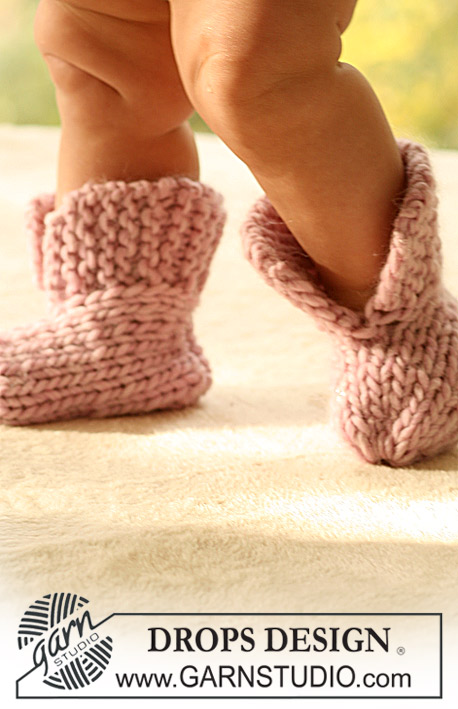 |
Set of knitted poncho with hood and booties for baby and children in DROPS Snow or DROPS Wish
DROPS Baby 16-1 |
|
|
GARTER ST (back and forth on needle): K all rows. MOSS ST: Row 1: * K1, P1 *, repeat from *-*. Row 2: K over P and P over K. Repeat row 2. INCREASING TIP: Inc 1 st by making 1 YO. Work YO into back of loop on return row to avoid a hole. ---------------------------------------------------------- PONCHO: Worked from top down, beg with hood. Cast on 37-39-41 (45-47) sts on circular needle size 8 mm [US 11] with Snow or Wish. Work moss st – SEE ABOVE – back and forth on needle with 3 garter sts – SEE ABOVE – each side. REMEMBER THE KNITTING GAUGE! When piece measures 19-21-23 (25-27) cm [7½"-8 ¼"-9" (9 ¾"-10⅝")] K 1 row from RS, AT THE SAME TIME dec 3-3-3 (7-7) sts evenly (do not dec on the 3 garter sts each side) = 34-36-38 (38-40) sts. Insert 4 markers in piece as follows (as seen from RS): M-1 after 4 sts, M-2 after 13-14-15 (15-16) sts, M-3 after 21-22-23 (23-24) sts and M-4 after 30-32-34 (34-36) sts. Now piece are measured from here. K 1 row from WS. READ ALL OF THE FOLLOWING SECTION BEFORE CONTINUING! Continue in stockinette st back and forth on needle with 3 garter sts each side towards mid front, AT THE SAME TIME on first row from RS inc as follows – SEE INCREASING TIP: 1 st AFTER M-1, 1 st BEFORE M-2, 1 st AFTER M-3, 1 st BEFORE M-4 (= 4 inc). Repeat the inc on every other row another 15-17-18 (20-21) times = 98-108-114 (122-128) sts. AT THE SAME TIME when piece measures 6-7-8 (9-10) cm [2⅜"-2 ¾"-3⅛" (3½"-4")] continue in the round in stockinette st - P the 6 sts mid front on first round, and then work them in stockinette st. After all inc are complete work 1 round stockinette st on all sts and continue in moss st for 4-4-5 (5-6) cm [1½"-1½"-2" (2"-2⅜")]. Work 1 round stockinette st and bind off loosely. ASSEMBLY: Sew hood tog at the top, sew in outer loops of sts top avoid a chunky seam. TIE STRINGS: Crochet a string of ch measuring approx 1 meter [1.1 yds] with 2 threads Snow or Wish. Thread string through row after the garter st on neckline. Tie a knot either end. ---------------------------------------------------------- BOOTIES: Worked back and forth on needle from toe towards the heel. Cast on 16-16-18 (18-20) sts on needle size 7 mm [US 10 ½] with Snow or Wish. Work stockinette st with 1 garter st each side until piece measures approx 4-4½-5 (6-6½) cm [1½"-1 ¾"-2" (2⅜"-2½")] – adjust so that next row is from RS. REMEMBER THE KNITTING GAUGE! Now work 2 sts in each of the middle 2 sts (to make bootie wider at top of foot) = 18-18-20 (20-22) sts, P return row. Now slip the first 9-9-10 (10-11) sts on a stitch holder. FIRST SIDE: Work remaining 9-9-10 (10-11) sts on row. Work return row and cast on 5-6-6 (7-7) new sts at the end of row – work new sts in garter st and work remaining sts as before = 14-15-16 (17-18) sts. Continue as follows: * 1 row on the first 5-6-6 (7-7) sts, turn piece and work return row, 1 row on all sts, turn piece and work return row *, repeat from *-* until piece measures 10-11-12 (14-16) cm [4"-4⅜"-4 ¾" (5½"-6 ¼")] where longest, bind off. THE OTHER SIDE: Slip sts on stitch holder back on needle, K 1 row from RS and now cast on 5-6-6 (7-7) new sts at the end of row = 14-15-16 (17-18) sts. Continue as described for first side until piece measures 10-11-12 (14-16) cm [4"-4⅜"-4 ¾" (5½"-6 ¼")], bind off. ASSEMBLY: Fold bootie double and sew tog mid back and under foot – sew in outer loops of sts to avoid a chunky seam. Run a thread round the toe, tighten and fasten. |
|
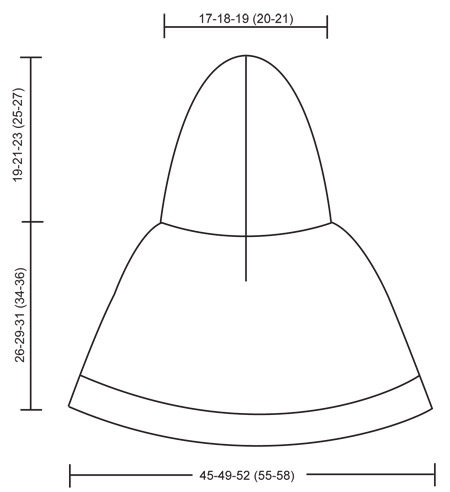
|
|
Have you finished this pattern?Tag your pictures with #dropspattern #littlepeachset or submit them to the #dropsfan gallery. Do you need help with this pattern?You'll find 16 tutorial videos, a Comments/Questions area and more by visiting the pattern on garnstudio.com. © 1982-2025 DROPS Design A/S. We reserve all rights. This document, including all its sub-sections, has copyrights. Read more about what you can do with our patterns at the bottom of each pattern on our site. |
|








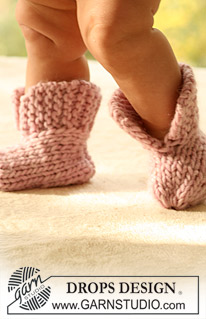




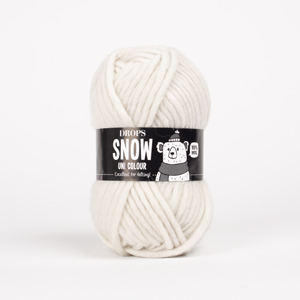
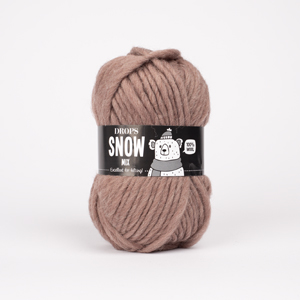



















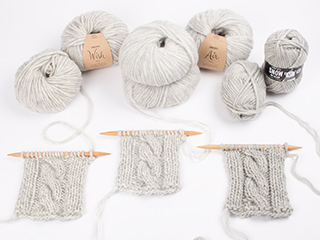










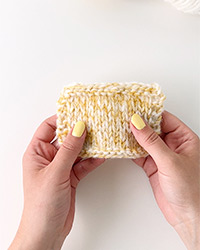
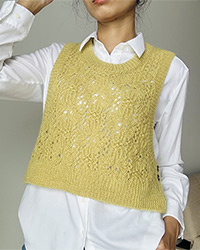

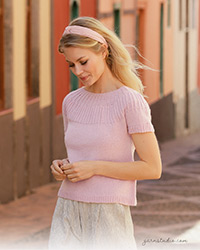
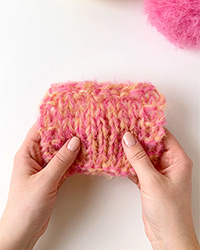
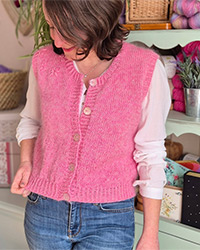
Post a comment to pattern DROPS Baby 16-1
We would love to hear what you have to say about this pattern!
If you want to leave a question, please make sure you select the correct category in the form below, to speed up the answering process. Required fields are marked *.